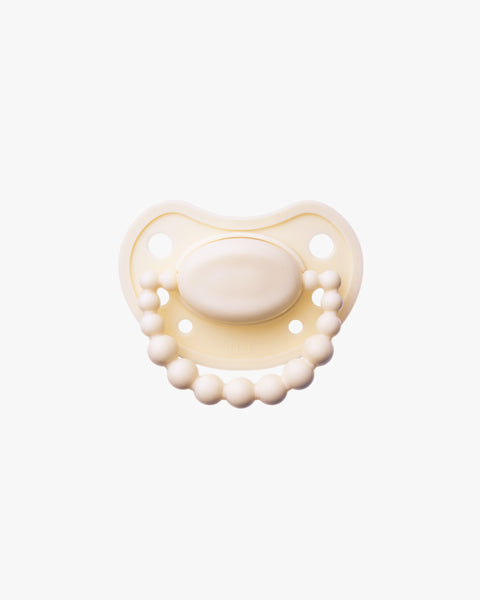According to data, in Poland, as many as 2-3 million women suffer from chronic urinary incontinence. In turn, men over 50 very often complain about prostate problems, and prostate cancer accounts for 11% of all cancer cases globally. Yes, yes, although the issue of pelvic floor muscle (PFM) exercises most often appears in the context of childbirth, this is not an organ reserved for people with a uterus. They are important for your health - regardless of gender!
Time for a quick anatomy lesson. The pelvic floor muscles stretch from the inside of the pubic bone to the anus and are wrapped around the urethra, rectum, and, in women, the vagina. Their structure is a bit like that of a hammock.
They are primarily responsible for holding urine, feces and gases, but that's not all! They are also important for sexual function in both men and women. They support erection and proper ejaculation, and their contractions contribute to better sensations during intercourse.
Find your MDM
Measuring your pelvic floor strength can be a difficult task without professional help. However, it is an important step because it provides self-awareness of your muscles. Therefore, it is also worth checking their strength on your own. Remember, however, that no self-diagnosis can replace the advice of an expert—in this case, a urogynecological physiotherapist.
The most commonly cited way to feel and locate your MDM is to stop the flow of urine when you go to the toilet. There is even a harmful myth that stopping the flow of urine is a great way to exercise your pelvic floor muscles. This is not true!
In this way, you can only harm yourself and lead to health problems, including recurrent inflammation or problems with completely emptying the bladder. That is why it is better to get to know your MDM in a different, non-invasive way.
Look...
This is the easiest way to find your pelvic floor muscles. Sit on the floor, rest your back on something comfortable, and position your legs so that your knees and hips are bent. Point a mirror at your perineum and look at your genital and anal area. Now contract your muscles as if you were trying to stop the flow of urine. Try not to contract your leg or buttock muscles at the same time, and don't hold your breath. In the mirror, you should see the muscles around your vagina moving inward, and your penis moving up and down. Men will also feel their anus retract. Remember, however, that each person is unique, and different techniques work for different people.
...and feel
You can feel these muscles working even outside your body. To get to know your pelvic floor muscles better, lie on your side with one pillow under your head and another between your knees. Gently place your hand on your buttocks, close to your perineum, and again imagine that you are trying to stop the flow of urine. During this exercise, you should feel the area under your fingers tense and lift.
It's time for the final step in learning about the kegel muscles. Lie on your back or side again and, using a small amount of lubricant, insert your index finger into your vagina. Slowly bend your finger and gently press against the side of your vaginal wall. Contract your pelvic floor muscles as you did in the previous steps. You should feel a squeeze and lift around your finger during this exercise. The strength of this sensation can indicate the condition of your muscles.
Bravo, you've just gotten to know your muscles better! How were the results? If you were able to see and feel your muscles contract after performing a self-examination, congratulations! If not, don't worry, isolating your pelvic floor muscles can be difficult. Many people take longer, so don't panic and try again in a while. However, if you don't see or feel any contractions for a longer period of time, I strongly encourage you to visit a urogynecological physiotherapist. They are specialists in the treatment of pelvic floor disorders. In fact, even if the above exercises worked out in a satisfactory way for you, it is best to go for a check-up at least once to make sure that everything is OK with your muscles. The examination conducted in such a clinic is easy and painless, usually takes little time, and may turn out to be the solution to many problems.
TRAIN! You won't regret it
Now training! If you are sure that you have identified the right body parts, you can start strengthening them. Here is an important note - regardless of your current form, it is always worth exercising them! Like all other muscles, the pelvic floor muscles require regular exercise to function optimally - it is worth taking care of their efficiency, because this can change with age, past injuries, childbirth, pregnancies, etc. Unfortunately, research shows that while most women know what pelvic floor exercises are (96.4%) and feel them working when they try to squeeze them, less than two in 10 women do the right exercises every day. No such study has even been conducted among men...
In the meantime, everyone can benefit from pelvic floor exercises, regardless of gender or genital structure. So, shall we begin?
How to exercise pelvic floor muscles?
You can do MDM training anywhere! Standing at the sink and brushing your teeth, putting on make-up, driving to work or school, eating dinner, reading a book, watching TV... literally anywhere and at any time! It is important to do the exercises regularly. Frequent, spontaneous pelvic floor muscle exercises, even several times a day, will quickly become a habit. There is only one important rule - you should always empty your bladder before doing the training.
To strengthen your pelvic floor muscles, sit or lie comfortably and contract them for a count of three, then relax for another count of three. Continue until you have completed 10 repetitions. Do not hold your breath or contract your abdominal, buttock or thigh muscles at the same time. As you get used to pelvic floor exercises, you can gradually try holding each contraction for a few seconds.
Each week you can add more contractions and/or increase their intensity, but be careful not to overdo it and always rest between sets. If you work your muscles too hard, they will become fatigued and unable to perform their necessary functions. Knowing how to relax your MDM is just as important as knowing how to tighten them! And be careful – if you feel pain in your abdomen or back after a Kegel session, you are not doing them correctly. Remember to relax your entire body during the workout.
Don't be discouraged if you don't see the desired results after a few weeks. Sometimes you have to wait even a few months for the first effects - this is a very individual matter. Remember, however, that you should continue the exercises, even if you notice that they are starting to work and you consider them to be strong - trained kegel muscles without training can weaken again.
Do I need tools?
I have already mentioned that you can train absolutely anywhere and in any situation. But do you need additional gadgets for the exercises? Generally no - you can strengthen your MDM without any problems by simply tensing and relaxing them in the appropriate series. In urogynecological offices, you can use methods based on biofeedback, and small vaginal probes are increasingly available for home use. They often connect to an application, show muscle strength and progress. These are effective and scientifically developed tools, so if you have the opportunity and desire, you can reach for such gadgets. Just make sure that the equipment has all the necessary certificates and is made of harmless material.
What is not good for pelvic floor muscles?
The weakening of the MDM is most often a result of pregnancy and childbirth. The problem can occur already during pregnancy. Therefore, it is worth remembering that a normal, uncomplicated pregnancy is not a contraindication to training! What's more, it is a good time to start strengthening your muscles - regular pelvic floor muscle exercises can make childbirth easier and reduce the risk of urinary incontinence or problems with organ prolapse (including the uterus) after childbirth. Age also affects the efficiency of the MDM - especially in women, reduced estrogen levels during menopause can cause weakening of the pelvic floor muscles.
What else is harmful? Frequent constipation, long-term coughing or sneezing (e.g. caused by asthma or the so-called "smoker's cough"), improper lifting of weights, as well as excess weight, which increases pressure on the pelvic floor. That is why it is worth remembering about prevention and following two simple rules when visiting the toilet.
First, don't wait to pee! Holding your urine for too long is bad for your MDM. Relax when urinating, straighten your back and don't tense your muscles. Don't pee in advance either! This unnecessarily tires your muscles. And second... Change the position in which you poop. Just put an upside-down bowl or cardboard under your feet and rest your feet on it, you can also slightly round your back. Thanks to this, the position in which you poop will be more physiological and will facilitate defecation. Don't push too hard! In the right position, pooping will be easier and a deep breath will be enough.
No stress!
The most common cause is a weakened pelvic floor, but some people have the opposite problem. Their muscles can become too tight, preventing their bladder and bowels from emptying properly—this is called pelvic floor hypertonia. This condition is less common than a weakened pelvic floor, but it is still a very annoying problem.
In extreme cases, this situation can even lead to sex being extremely painful or even impossible. In such a situation, be sure to seek advice from a physiotherapist specializing in MDM therapy or a doctor. In the case of difficulties with emptying the bladder or bowels or urination, it is also worth seeking professional help.
Created at: 06/08/2022
Updated at: 28/06/2023












































































































































